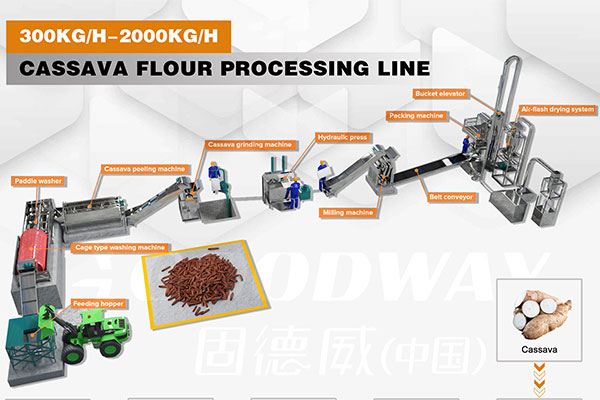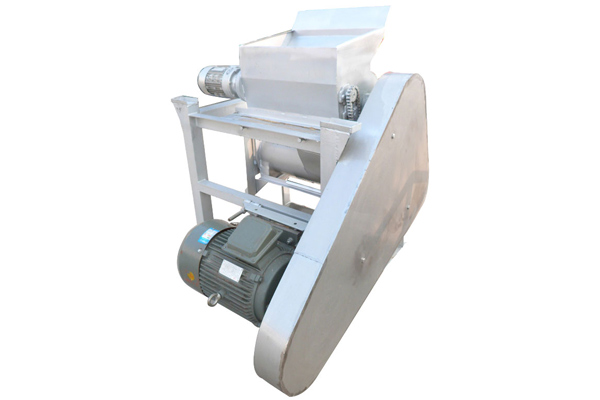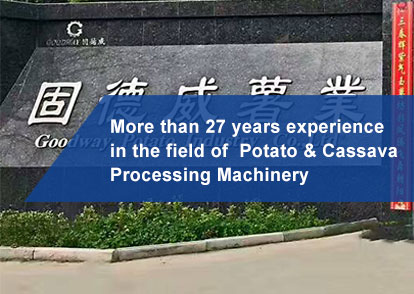Cassava producing countries should more translate this relatively low-cost raw material into high-value starch for domestic and international markets.
It is estimated that 60 million tons of starch is extracted annually from various cereal, root and tuber crops for use in a wide range of surprising products such as stabilizers for soups and frozen foods, coatings for tablets and coatings, stamps and adhesives for plywood, hardeners for textiles, raw materials for making ethanol, and even as binders for concrete. 10% of this type of starch comes from cassava roots. It is a more well-known crop and is the staple food for millions of low-income rural populations in Africa, Asia and Latin America.
With the current annual production of cassava roots in the world reaching about 200 million tons, FAO believes that by converting relatively inexpensive raw materials into high-value starches, many developing countries can strengthen their economies and increase the income of cassava growers. The great starch can be made with cassava. Compared to starch from most other plants,
tapioca starch has better transparency and viscosity and is very stable in acidic food products. It also has excellent properties for non-food products such as pharmaceuticals and thermoplastic biodegradable plastics.
As a crop, cassava has advantages in production, such as high yield per unit area, drought tolerance and adaptation to barren land, and great flexibility in planting and harvesting. It is highly competitive as a source of starch. On a dry weight basis, the roots contain more starch than almost any other food crop. Starch is easy to extract using simple techniques. Export prices are always lower than those of potato, corn and wheat starch produced in the EU and the US. For example, the premium tapioca starch produced in Thailand currently costs about US $225 per ton.
As a program promoted by IFAD and FAO, the Global Cassava Development Strategy recognizes the importance of processing fresh roots to produce by-products such as starch within the context of a market-driven commodity chain. However, despite the global demand for
tapioca starch has increased over the past 25 years, it is only in Thailand that cassava has completed the conversion of staple foods to processing products and raw materials.
In Africa, with an annual output of more than 100 million tons of roots, there is almost no starch extraction industry except Nigeria and South Africa. "In most countries in tropical Africa, cassava root is a basic staple food, an important reserve for other crop failures and an increasingly economic crop for the urban market," Root and tuber crops at FAO's crops and pastures expert NeBambi Lutaladio said. "Although the starch imported by some countries can be produced locally using cassava, its government has not been able to adjust its policies to encourage the production of
cassava starch."
FAO believes that in the global and domestic starch markets, the key to the future of cassava is the improvement of efficiency and quality and the reduction of production costs. African and Latin American countries only need to look at Thailand, the world's largest producer, to find a successful model for the development of the tapioca starch industry. The industry in Thailand began more than 50 years ago and developed rapidly in the 1990s, when trade restrictions drastically reduced the market for Thai dried cassava chips used as livestock feed in Europe.
FAO recommends that the emerging tapioca starch industry should first focus on meeting the domestic market. A study of the international cassava market found that tropical countries import corn starch and derivatives worth more than $80 million annually. The study also found that almost all imported products in many countries can be replaced with locally produced tapioca starch. Or for some simple applications, even high quality tapioca can be used instead.
In Africa, there is an indication that interest in using native tapioca starch as a substitute for imported products is increasing. Uganda, Tanzania and Madagascar have initially established companies for tapioca starch. Many industries in Malawi have expressed interest in purchasing local tapioca starch for paper, cardboard, confectionery and food processing. At the same time, Nigeria, a major producer of cassava in the region, recently announced an ambitious plan to use cassava to produce ethanol biofuels.
Nebbi Rutaradio said, "In all tropical countries with a certain degree of industrialization, local tapioca starch has some degree of market opportunity. However, for new members who may enter this market, they can succeed only have enough funds to support this adventure and they provide a reliable supply of starch at competitive prices to meet user requirements."
GOODWAY can provide you with a complete set of
cassava processing machine and solutions, please contact us.

 EN
EN
 fr
fr  es
es  it
it  pt
pt 







